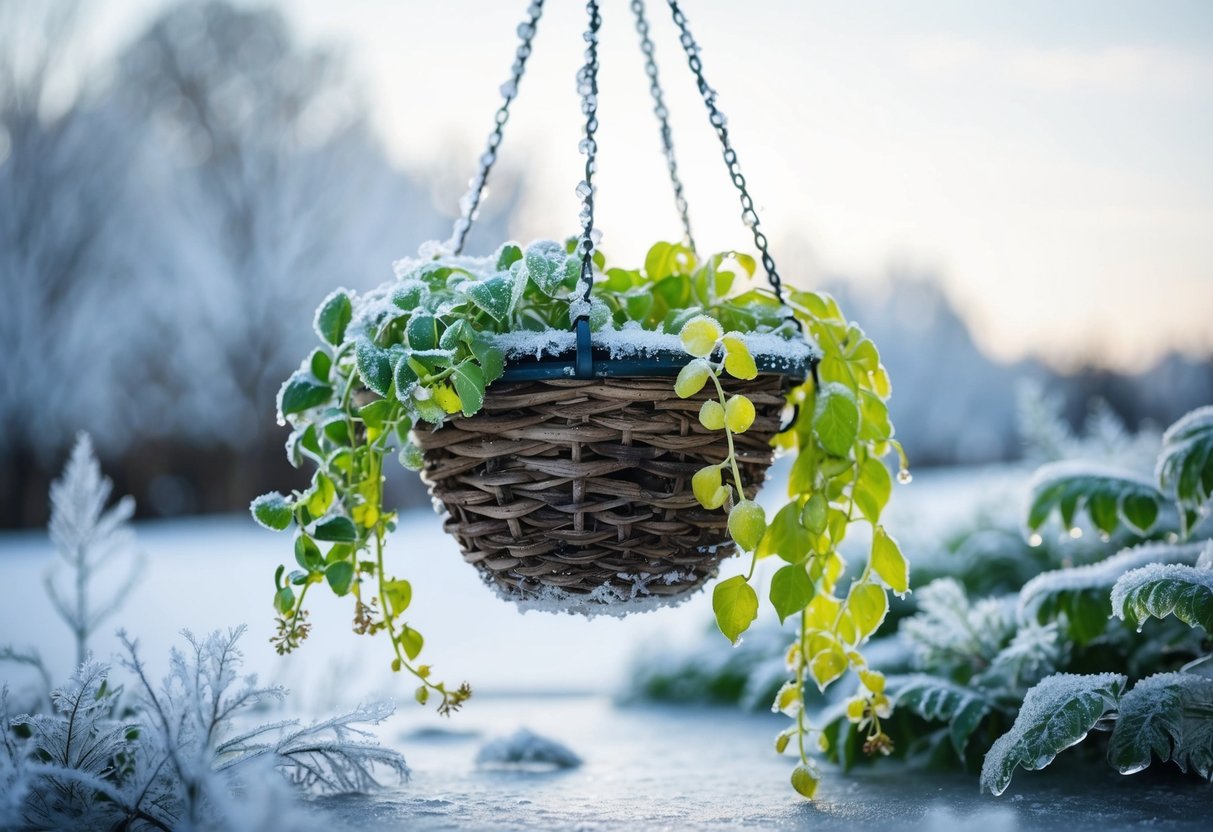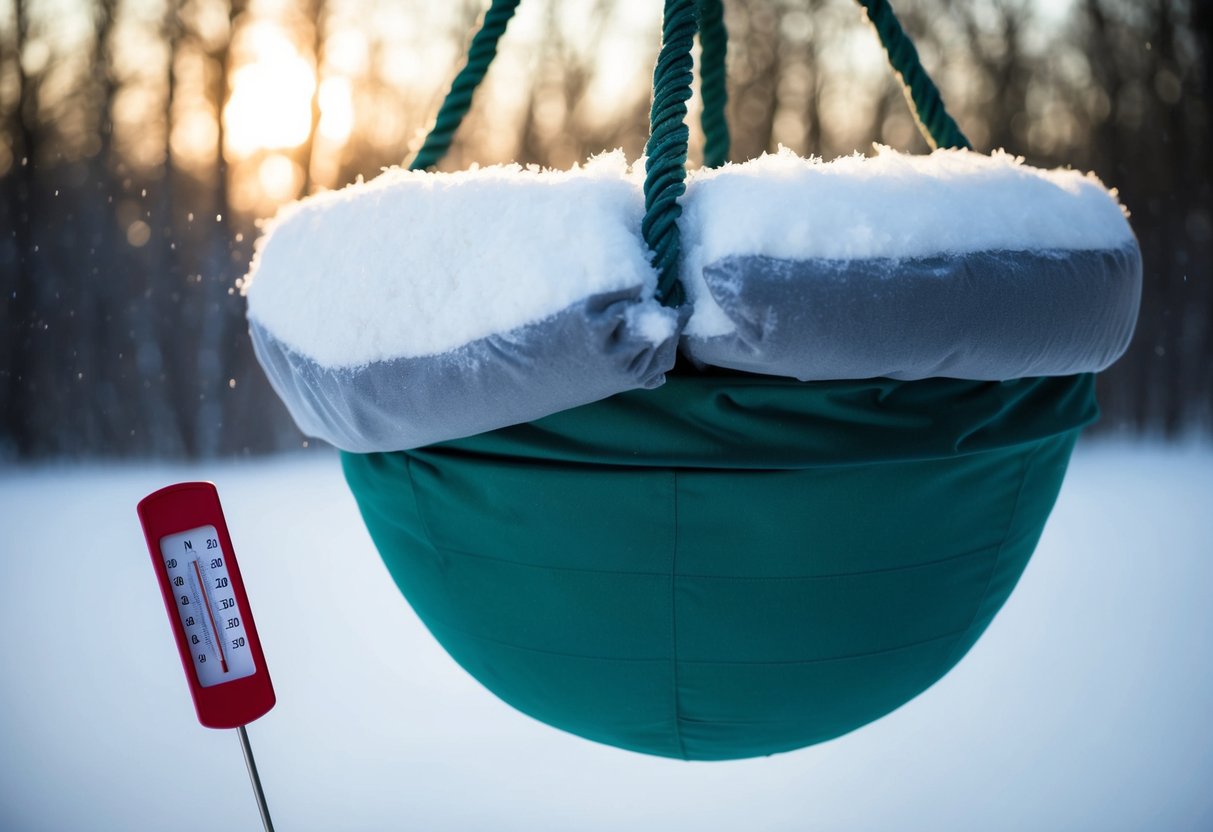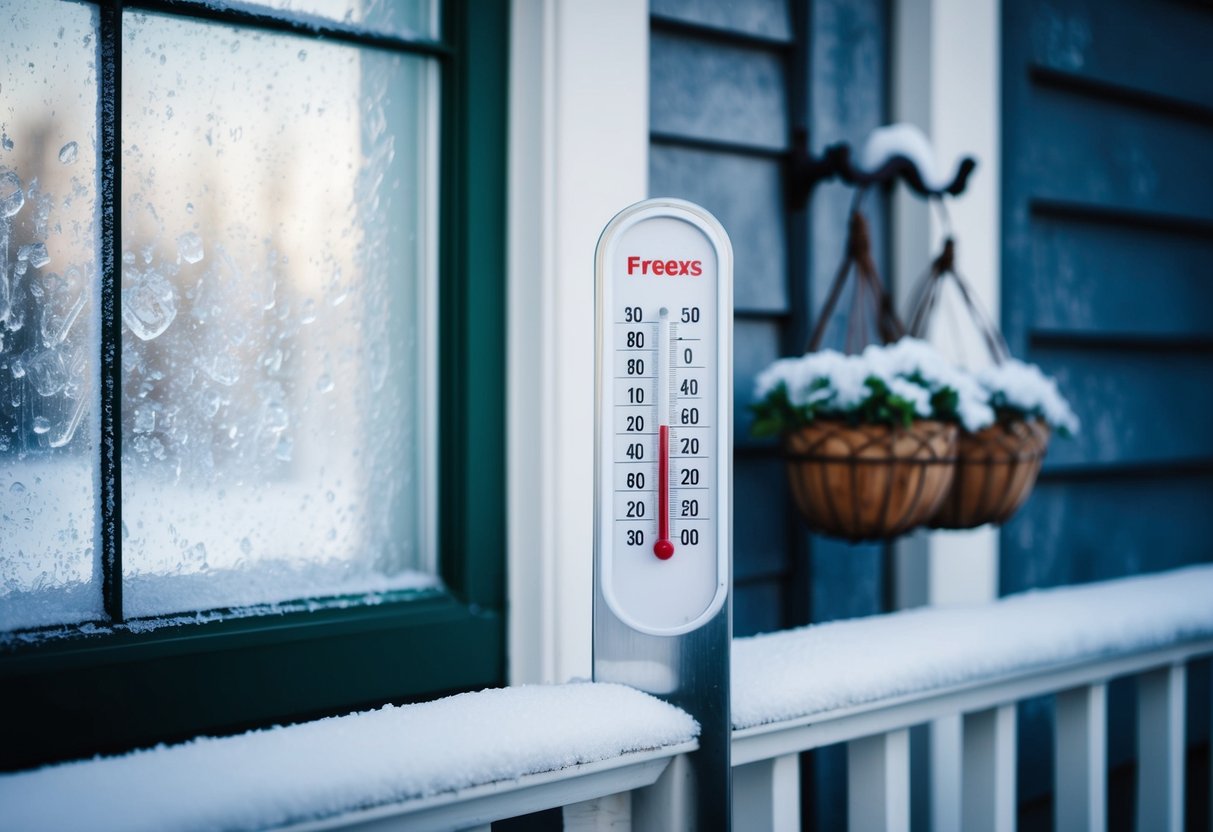What Temperature Is Too Cold for Hanging Baskets? Tips for Protecting Your Plants
When caring for your garden, keeping your hanging baskets healthy is key. Knowing when to bring them inside can make all the difference in your plant care routine.
Hanging baskets are in danger when temperatures drop near freezing. Freezing temperatures can harm or kill the plants in these baskets, so you must act before the frost hits.

Seasonal changes can sneak up on you, especially as summer fades. Bringing your hanging baskets indoors not only protects them from the cold but also from harsh winds and potential snow damage.
Even small things like a nighttime frost can make a big impact on these delicate plants.
Knowing the right conditions can prevent possible damage to your garden. Choosing the right spot inside for your hanging baskets keeps them safe and vibrant.
With the right steps, your favorite plants can thrive even when it’s chilly outside. Keep reading to discover more tips on how to care for your hanging baskets all year round.
Understanding the Ideal Temperature Range for Hanging Baskets

You want your hanging baskets to thrive, right? It’s important to keep an eye on the temperature. Most hanging plants prefer to be in mild temperatures.
General Guidelines:
- Too Cold: Below 40°F (4°C) can risk damage.
- Perfect Range: Between 55°F (13°C) and 75°F (24°C) is ideal for many species.
When temperatures dip close to freezing, like when it’s below 40°F, you should bring the baskets inside. This protects them from frost.
Different plant species have specific needs. Tropical plants love warmth and might suffer when it gets chilly. Desert plants like succulents or cacti handle heat well but don’t like the cold.
Temperature Tips:
- Keep baskets out of direct sunlight during summer’s hottest part.
- Consider placing them in a shaded area if the temperature rises too high.
Watch the weather changes. If there’s a forecast for frost, move your baskets indoors or to a protected spot, like a garage.
Selection of Plants Resistant to Cold Temperatures

When choosing plants for your hanging baskets in colder weather, it’s important to pick species that can handle lower temperatures. Look for hardy plants and consider using succulents, which are often well-suited for these tough conditions.
Hardy Plants for Colder Climates
Certain plants are naturally better equipped to withstand cold temperatures. Ivy is a popular choice for its resilience and draped look.
Heucheras, like the ‘Silver Gumdrop,’ offer vibrant foliage and are known for enduring cooler conditions.
Carex is another good option. This ornamental grass adds a change in texture and is praised for its sharp-edged leaves. It’s an interesting pick for winter baskets, offering both beauty and toughness. Consider these when looking to fill your baskets with cold-tolerant options.
Succulents in Hanging Baskets
Succulents can be an excellent choice for hanging baskets in cooler weather. These plants store water in their leaves, enabling them to survive in dry and cold environments.
Sedum is a great species to consider; it comes in various forms with stunning leaf shapes.
Another robust succulent is Sempervivum, or “Hens and Chicks.” These plants are easy to care for and can handle a drop in temperatures.
You might also consider using Echeveria for its diverse colors and shapes, adding beauty to your baskets while resisting the cold.
Effective Insulation Strategies for Protecting Hanging Baskets

Protecting hanging baskets from extreme temperatures involves using materials like burlap and coco fiber, as well as applying row covers. These methods help maintain correct moisture levels and create a buffer against cold or fluctuating temperatures.
Benefits of Burlap and Coco Fiber
Burlap and coco fiber offer excellent protection for your hanging baskets. These materials act as natural insulators, helping to shield the roots from cold weather.
Burlap is breathable, which prevents the plants from overheating. It’s also easy to wrap around baskets or containers.
Coco fiber is another great choice. It’s dense, providing even more insulation than burlap alone.
By lining your hanging baskets with coco fiber, you create a cozy barrier that keeps the soil warm. This helps in maintaining healthier roots. Plus, coco fiber is eco-friendly, so you’re also making a green choice.
Using these insulating materials is simple and effective. Wrap them snugly around your baskets and let them work their magic. Both burlap and coco fiber are accessible at garden centers, making them convenient to use.
Using Row Covers for Extra Protection
Row covers add another layer of insulation to your hanging baskets. These lightweight fabrics are often used to protect plants from frost.
They trap heat, raising the temperature around your plants just enough to fend off the chill.
To use a row cover, drape it gently over your baskets. Secure it in place with ties or weights. The material should be loose enough to allow airflow, but snug enough to keep warmth in.
Some row covers are even UV-stabilized, offering protection from intense sun when winter days are bright.
Row covers are reusable and easy to handle. They can be put on and removed as needed, giving you flexibility to respond to changing weather.
By using row covers, you not only shield your plants from cold but also help retain moisture, preventing them from drying out.
Best Practices for Winterizing Hanging Baskets

When preparing your hanging baskets for the cold season, focus on choosing the right potting mix, maintaining soil health, and ensuring proper watering and drainage. These steps help protect hanging baskets from the chill and keep your plants healthy.
The Role of Potting Mix and Soil Health
Use a potting soil that retains moisture but drains well. Choosing a mix that has added perlite or vermiculite can improve drainage and prevent root rot. A rich soil mix will provide essential nutrients and keep plants strong during colder months.
Consider using peat pots for hanging baskets. They help regulate moisture and are easy to manage.
In addition, keep your soil aerated, as compacted soil can suffocate roots. Check your potting mix regularly and refresh it if it appears depleted or compacted.
Healthy soil helps your hanging baskets thrive, even in lower temperatures.
Watering and Drainage Considerations
Proper watering is crucial when temperatures drop. Overwatering can lead to frozen roots, so it’s important to monitor moisture levels.
Make sure your hanging baskets have sufficient drainage holes to allow excess water to escape.
It’s best to water in the morning when temperatures are warmer. This ensures plants absorb needed moisture before nighttime freezes.
Avoid letting water collect at the base, as this can cause damage to roots and containers. Regularly check your baskets after rain or snow to remove excess water.
By keeping an eye on your watering practices, you’re better equipped to protect your hanging baskets during winter.
Feeding Your Hanging Baskets During the Cold

Caring for your hanging baskets during cold weather involves more than just bringing them indoors. You also need to keep them well-fed so they stay healthy and vibrant.
A great option for the cold months is slow-release fertilizer. It provides nutrients over time, which means you won’t have to feed your plants as often. Apply this type of fertilizer every few weeks to maintain steady growth.
In addition to slow-release fertilizer, you can also use a liquid fertilizer. This allows for quick absorption, giving your plants an energy boost. Dilute the liquid fertilizer to half strength and apply it every two weeks for best results.
Use a mix of both types of fertilizers: slow-release for steady nutrition and liquid for quick nourishment. This combination helps your plants adapt to shorter days and lower light levels.
Always follow package instructions, and be careful not to overfeed, which can harm your plants. Keep an eye on your hanging baskets and adjust feeding schedules as needed.







